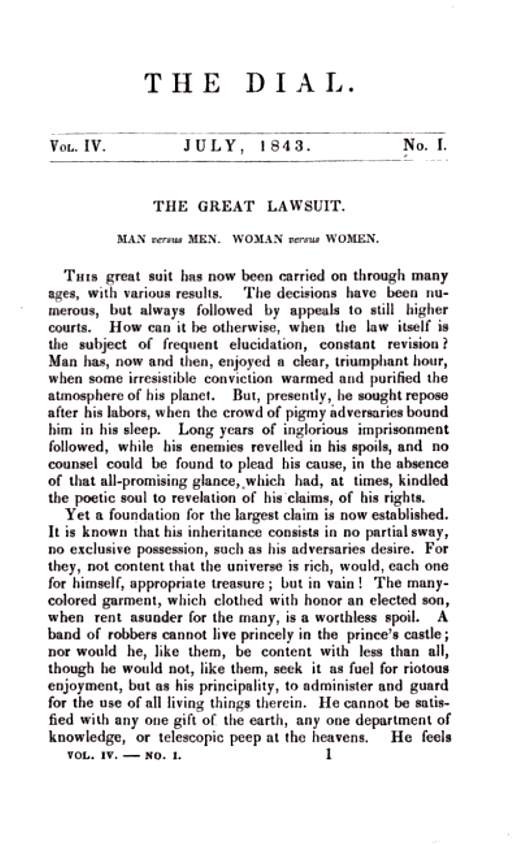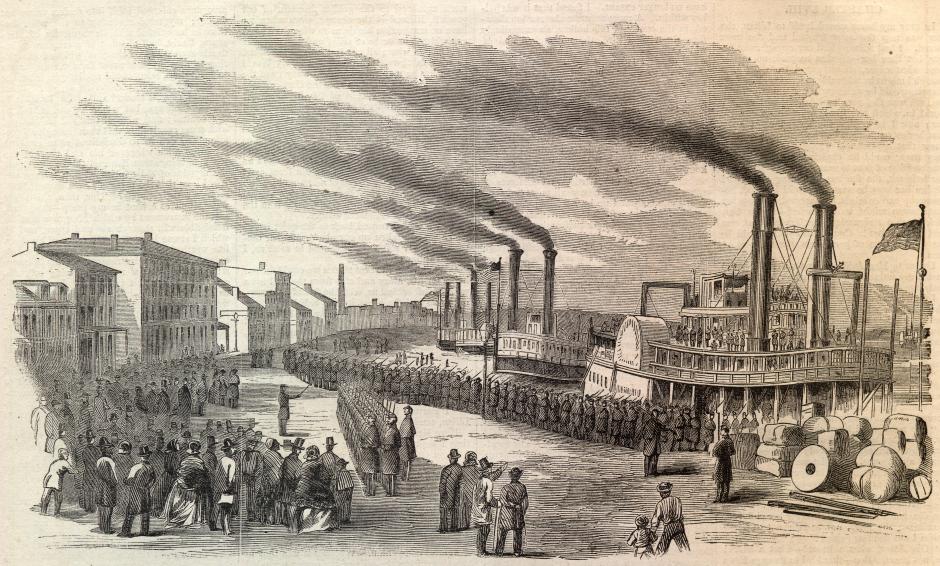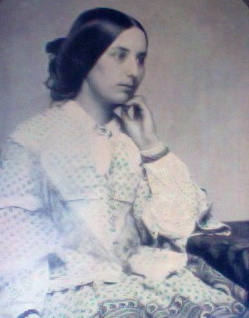|
George Keats
George Keats (28 February 1797 – 24 December 1841) was a British-American businessman and civic leader in Louisville, Kentucky, as it emerged from a frontier entrepôt into a mercantile centre of the old northwest. He was also the younger brother of the Romantic poet John Keats. During the years from 1821 to 1841, Keats led a philosophical society, meant to overcome Louisville's raw culture, operating a literary salon in his living room which evolved into the Lyceum and then into the board of Louisville College, the precursor to the University of Louisville. In 1827, Keats was elected to the Ohio Bridge Commission, laying the foundation for the river's first crossing. The state government appointed him to the board of the Bank of Kentucky in 1832. He joined the boards of ten other organisations, including the Kentucky Historical Society and the Harlan Museum, which he headed. In 1841, he was elected to the city council. Early life Keats, a younger brother of John Keats, was l ... [...More Info...] [...Related Items...] OR: [Wikipedia] [Google] [Baidu] |
Cave Hill Cemetery
Cave Hill Cemetery is a Victorian era National Cemetery and arboretum located at Louisville, Kentucky. Its main entrance is on Baxter Avenue and there is a secondary one on Grinstead Drive. It is the largest cemetery by area and number of burials in Louisville. Cave Hill was listed on the National Register of Historic Places in 1979. Cave Hill National Cemetery, containing military graves, is also on the National Register, added in 1998. History Cave Hill was chartered in 1848 on what was William Johnston's Cave Hill Farm, then a rural property some distance east of Louisville. Johnston, who died in 1798, had built the first brick house in Louisville on the grounds circa 1788. City officials had purchased part of the land in the 1830s in anticipation of building a railroad through it, and a workhouse was built there. The railroad was built elsewhere, and the land was leased to local farmers. In 1846, Mayor Frederick A. Kaye began investigating the possibility of develo ... [...More Info...] [...Related Items...] OR: [Wikipedia] [Google] [Baidu] |
Edwards County, Illinois
Edwards County is a county located in the U.S. state of Illinois. As of the 2010 census, the population was 6,721. Its county seat is Albion. History Edwards County was named for Ninian Edwards, the governor of the Illinois Territory, and, later, governor of Illinois. Edwards County is subdivided into "Road Districts", rather than "Townships" as in most Illinois counties. Pursuant to the Land Ordinance of 1785, the Northwest Territory (including Illinois) was surveyed and mostly organized into townships that are six miles square; but Edwards County was settled prior to that survey, and its pre-existing Road Districts do not generally correspond with the survey's townships. File:Edwards County Illinois 1815.png, Edwards County, when it was created in 1815 from Gallatin and Madison Counties, extended north to Lake Michigan. File:Edwards County Illinois 1816.png, The county between 1816 and 1819. Clark and White Counties were created from Edwards and Gallatin Counties. F ... [...More Info...] [...Related Items...] OR: [Wikipedia] [Google] [Baidu] |
George Dennison Prentice
George Dennison Prentice (December 18, 1802 – January 22, 1870) was an American newspaper editor, writer and poet who built the ''Louisville Journal'' into a major newspaper in Louisville, Kentucky, and the Ohio River Valley, in part by the virulence and satire in its editorials, which some blamed for a bloody election day riot in 1855. A slaveholder, Prentice initially supported Unionist candidate John Bell in the 1860 U.S. Presidential election, and after the American Civil War, he urged Kentucky to remain neutral. Both of his sons joined the Confederate States Army, one dying in 1862, and Prentice's editorials lampooned Kentucky's military governor, Union General Stephen G. Burbridge. Prentice later opposed Congressional Reconstruction. He wrote a biography of Henry Clay published in 1831, an 1836 poem published in the McGuffey Readers, and a collection of his humorous essays was published in 1859 and revised after his death. Early and family life Prentice was born in Ne ... [...More Info...] [...Related Items...] OR: [Wikipedia] [Google] [Baidu] |
The Dial
''The Dial'' was an American magazine published intermittently from 1840 to 1929. In its first form, from 1840 to 1844, it served as the chief publication of the Transcendentalists. From the 1880s to 1919 it was revived as a political review and literary criticism magazine. From 1920 to 1929 it was an influential outlet for modernist literature in English. Transcendentalist journal Members of the Hedge Club began talks for creating a vehicle for their essays and reviews in philosophy and religion in October 1839.Gura, Philip F. ''American Transcendentalism: A History''. New York: Hill and Wang, 2007: 128. Other influential journals, including the ''North American Review'' and the ''Christian Examiner'' refused to accept their work for publication. Orestes Brownson proposed utilizing his recently established periodical ''Boston Quarterly Review'' but members of the club decided a new publication was a better solution.Von Mehren, Joan. ''Minerva and the Muse: A Life of Margaret ... [...More Info...] [...Related Items...] OR: [Wikipedia] [Google] [Baidu] |
James Freeman Clarke
James Freeman Clarke (April 4, 1810 – June 8, 1888) was an American minister, theologian and author. Biography Born in Hanover, New Hampshire, on April 4, 1810, James Freeman Clarke was the son of Samuel Clarke and Rebecca Parker Hull, though he was raised by his grandfather James Freeman, minister at King's Chapel in Boston, Massachusetts.Benowitz, June Melby. ''Encyclopedia of American Women and Religion''. Santa Barbara, CA: ABC-CLIO, LLC, 2017: vol. I, p. 110; He attended the Boston Latin School, and later graduated from Harvard College in 1829, and Harvard Divinity School in 1833. Ordained into the Unitarian church he first became an active minister at Louisville, Kentucky, then a slave state, and soon threw himself into the national movement for the abolition of slavery. His theology was unusual for the conservative town and, reportedly, several women walked out of his first sermon. As he wrote to his friend Margaret Fuller, "I am a broken-winged hawk, seeking to fly ... [...More Info...] [...Related Items...] OR: [Wikipedia] [Google] [Baidu] |
John J
John is a common English name and surname: * John (given name) * John (surname) John may also refer to: New Testament Works * Gospel of John, a title often shortened to John * First Epistle of John, often shortened to 1 John * Second Epistle of John, often shortened to 2 John * Third Epistle of John, often shortened to 3 John People * John the Baptist (died c. AD 30), regarded as a prophet and the forerunner of Jesus Christ * John the Apostle (lived c. AD 30), one of the twelve apostles of Jesus * John the Evangelist, assigned author of the Fourth Gospel, once identified with the Apostle * John of Patmos, also known as John the Divine or John the Revelator, the author of the Book of Revelation, once identified with the Apostle * John the Presbyter, a figure either identified with or distinguished from the Apostle, the Evangelist and John of Patmos Other people with the given name Religious figures * John, father of Andrew the Apostle and Saint Peter * Pope John ... [...More Info...] [...Related Items...] OR: [Wikipedia] [Google] [Baidu] |
Louisville And Portland Canal
The Louisville and Portland Canal was a canal bypassing the Falls of the Ohio River at Louisville, Kentucky. The Falls form the only barrier to navigation between the origin of the Ohio at Pittsburgh and the port of New Orleans on the Gulf of Mexico; circumventing them was long a goal for Pennsylvanian and Cincinnatian merchants.Yater, George. ''The Encyclopedia of Louisville''p. 531 "Louisville and Portland Canal". University Press of Kentucky (Lexington), 2001. Accessed 9 October 2013. The canal opened in 1830 as the private Louisville and Portland Canal Company but was gradually bought out during the 19th century by the federal government, which had invested heavily in its construction, maintenance, and improvement. The Louisville and Portland Canal was renamed as the McAlpine Locks and Dam in 1962 after extensive modernization. The name "Louisville and Portland Canal" (or simply "Portland Canal") is still used to refer to the canal itself, which runs between the Kentucky ban ... [...More Info...] [...Related Items...] OR: [Wikipedia] [Google] [Baidu] |
Charles Armitage Brown
Charles Armitage Brown (14 April 1787 – 5 June 1842) was a close friend of the poet John Keats, as well as a friend of artist Joseph Severn, Leigh Hunt, Thomas Jefferson Hogg, Walter Savage Landor and Edward John Trelawny. He was the father of Charles (Carlino) Brown, a pioneer and politician of New Plymouth, New Zealand. Early life Brown was born in Lambeth (London). He had very little formal education and to a large extent was self-taught. He began a career as a merchant, starting as a clerk at the age of fourteen, earning £40 per year. At eighteen he joined his brother in Saint Petersburg, Russia in a fur-trading business where they were to accumulate the sum of £20,000, only to lose most of it in an unwise speculation in bristles. They returned to England almost penniless, though Brown capitalized on his Russian experience by writing a comic opera, ''Narensky, or, The Road to Yaroslaf'', which was produced at Drury Lane in January 1814, earning him £300 and free a ... [...More Info...] [...Related Items...] OR: [Wikipedia] [Google] [Baidu] |
Fanny Brawne
Frances "Fanny" Brawne Lindon (9 August 1800 – 4 December 1865) is best known as the fiancée and muse to English Romantic poet John Keats. As Fanny Brawne, she met Keats, who was her neighbour in Hampstead, at the beginning of his brief period of intense creative activity in 1818. Although his first written impressions of Brawne were quite critical, his imagination seems to have turned her into the goddess-figure he needed to worship, as expressed in '' Endymion'', and scholars have acknowledged her as his muse. They became secretly engaged in October 1819, but Keats soon discovered that he was suffering from tuberculosis. His condition limited their opportunities to meet, but their correspondence revealed passionate devotion. In September 1820, he left for the warmer climate of Rome, and her mother agreed to their marrying on his projected return, but he died there in February 1821, aged twenty-five. Brawne drew consolation from her continuing friendship with ... [...More Info...] [...Related Items...] OR: [Wikipedia] [Google] [Baidu] |
George Keats Home
George may refer to: People * George (given name) * George (surname) * George (singer), American-Canadian singer George Nozuka, known by the mononym George * George Washington, First President of the United States * George W. Bush, 43rd President of the United States * George H. W. Bush, 41st President of the United States * George V, King of Great Britain, Ireland, the British Dominions and Emperor of India from 1910-1936 * George VI, King of Great Britain, Ireland, the British Dominions and Emperor of India from 1936-1952 * Prince George of Wales * George Papagheorghe also known as Jorge / GEØRGE * George, stage name of Giorgio Moroder * George Harrison, an English musician and singer-songwriter Places South Africa * George, Western Cape ** George Airport United States * George, Iowa * George, Missouri * George, Washington * George County, Mississippi * George Air Force Base, a former U.S. Air Force base located in California Characters * George (Peppa Pig), a 2-year-old ... [...More Info...] [...Related Items...] OR: [Wikipedia] [Google] [Baidu] |
Martin Chuzzlewit
''The Life and Adventures of Martin Chuzzlewit'' (commonly known as ''Martin Chuzzlewit'') is a novel by Charles Dickens, considered the last of his picaresque novels. It was originally serialised between 1842 and 1844. While he was writing it Dickens told a friend that he thought it was his best work thus far, but it was one of his least popular novels, judged by sales of the monthly instalments. Characters in this novel gained fame, including Pecksniff and Mrs Gamp. Like nearly all of Dickens's novels, ''Martin Chuzzlewit'' was first published in monthly instalments. Early sales of the monthly parts were lower than those of previous works, so Dickens changed the plot to send the title character to the United States. Dickens had visited America in 1842 in part as a failed attempt to get the US publishers to honour international copyright laws. He satirized the country as a place filled with self-promoting hucksters, eager to sell land sight unseen. In later editions, and in hi ... [...More Info...] [...Related Items...] OR: [Wikipedia] [Google] [Baidu] |
Charles Dickens
Charles John Huffam Dickens (; 7 February 1812 – 9 June 1870) was an English writer and social critic. He created some of the world's best-known fictional characters and is regarded by many as the greatest novelist of the Victorian era.. His works enjoyed unprecedented popularity during his lifetime and, by the 20th century, critics and scholars had recognised him as a literary genius. His novels and short stories are widely read today. Born in Portsmouth, Dickens left school at the age of 12 to work in a boot-blacking factory when his father was incarcerated in a debtors' prison. After three years he returned to school, before he began his literary career as a journalist. Dickens edited a weekly journal for 20 years, wrote 15 novels, five novellas, hundreds of short stories and non-fiction articles, lectured and performed readings extensively, was an indefatigable letter writer, and campaigned vigorously for children's rights, for education, and for other social ... [...More Info...] [...Related Items...] OR: [Wikipedia] [Google] [Baidu] |






